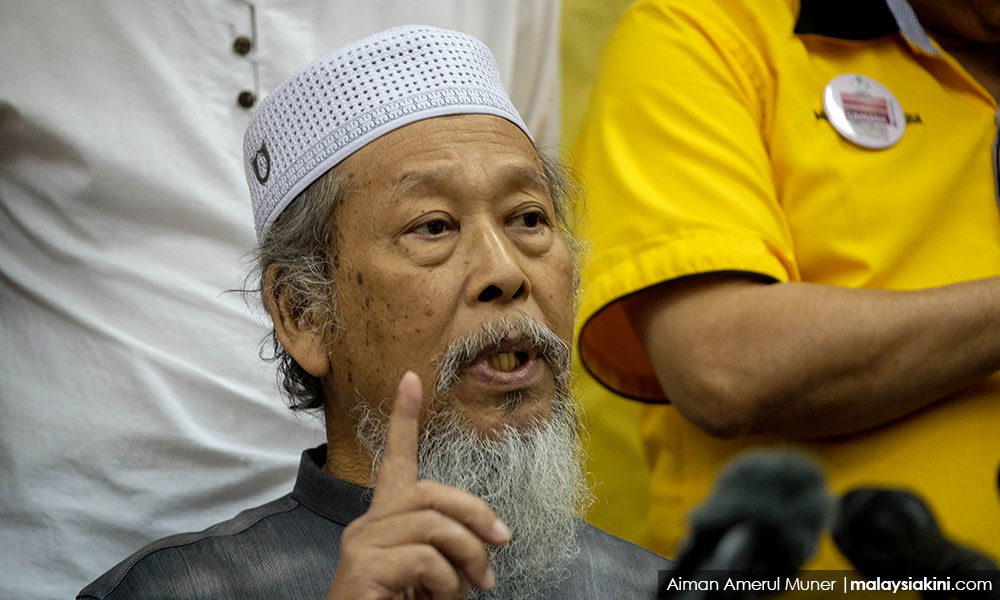
I was very glad to read the letter in a newspaper written by my former secondary school teacher, Elizabeth Moggie.
Moggie taught me in St Joseph’s in Kuching some 45 years ago. She was an excellent, well-read teacher, and her history class was something I looked forward to as a student.
History and geography were my second most favourite subjects after English. Mrs Moggie, as we fondly called her then, was a dedicated teacher who would make sure we remembered names and dates of important historical events correctly.
Her husband, Leo Moggie, is a well-known Iban politician from Kanowit, Sarawak. He served in the federal cabinet for almost three decades. He is now chairperson of Tenaga Nasional Berhad.
Let me make it clear that Elizabeth Moggie wrote the letter not in response to Gerakan Pembela Ummah (Ummah) chairperson Ismail Mina Ahmad’s recent outlandish outburst, but merely to set the record straight on the historical facts of the subject, which I believe she would know best as a historian.
A New Zealander, she stayed away from the limelight when her husband was a busy, high-profile politician and minister. Wisely, she was aware of her role as the foreign wife of a prominent Malaysian minister.
In her letter, Moggie started off saying she was encouraged by the article penned by The Star CEO Wong Chun Wai on the part played by non-Malays in defending Malaya during the First Emergency 1948–1960, and the Second Emergency of the 1970s–1980s.
“However, as far as I am aware, no mention has been made so far of the role played by volunteers during the Japanese invasion. The Malayan Volunteers, as they were known, were territorial soldiers from all races and backgrounds,” Moggie said in her letter.
She wrote that volunteer battalions had been in existence since the late 19th century, but in the 1930s, their units and number of members greatly increased.
“The Federated Malay States Volunteer Forces (FMSVF) comprised four battalions, one for each of the Federated States, the Straits Settlement Volunteer Force (SSVF) comprising two battalions for Singapore (at that time part of Malaya), and one each for Penang and Malacca, and there were volunteer forces in Johor (Johor Volunteer Engineers), Kedah and Kelantan.
“In addition, there were the Navy Volunteer Reserves, Volunteer Air Force, Armoured Car Companies and a number of other specialised units.”
Moggie explained that when the invasion began, these men did not operate with their volunteer units, but were assigned to regular British and Indian regiments.
“Many were killed or wounded in action. Though some volunteers became prisoners of war in Singapore, others managed to make their way, largely on foot, back to their kampungs and towns.
“As the retreat drew closer to Singapore, British officers gave the local-born the option to discard their weapons and uniforms and return to their families.
“Those who survived endeavoured to keep their military involvement secret from the occupying force, and so their brave service is largely forgotten or unknown.”
Moggie also noted that Malacca’s B Company 4/SSVF was purely Chinese, and included Captain Cho Seow Lim, who was killed in action in Singapore on Feb 13, 1942.
“Company quartermaster sergeant Tan Kim Tee was executed in Singapore on Feb 28, 1942 together with 88 other Chinese and Malay volunteers,” she added.
“George Hess’e of the FMSVF Light Battery and Robert Devadason Sapper of 1/FMSVF, both of Ceylonese extraction, survived the war after hazardous journeys to their respective homes. George travelled from Singapore to Selangor and Robert from Kuala Lipis to Gombak.
“Many Malays were volunteers, including private Md. Yusuf Harun of A Company 4/SSVF who made his way from Singapore backs to Malacca on foot. One of the European Volunteers was Mubin Sheppard, captain of 1FMSVF. He was a POW in Changi.”
Moggie pointed out that Malaysia has plenty of heroes from all communities who have bravely defended the country, but their exploits, in particular those of the volunteers mentioned here, remain largely unknown.
She added that a revision of the school history syllabus is sorely needed to give the young a balanced account.
I hope by now, Ismail Mina is truly satisfied that non-Malays were also in the fight to protect their homeland. History, as Moggie and all historians would agree, does not lie.
It’s unfortunate that the ustaz has not made any clarification on his speech at the recent “Umrah Uprising” convention, nor conceded that he was wrong.
Earlier, I had been very disturbed by Ismail Mina’s stand declaring that Malaysians who did not agree with the Federal Constitution should leave the country.
Even Deputy Prime Minister Ahmad Zahid Hamidi ticked off the ustaz for his uncalled-for remarks.
I think an apology from Ismail Mina to Malaysians would be in order.
And Mrs Moggie, my dear teacher, do keep on teaching us history with your writing. Many of your former students, including me, are more than happy to keep on learning from you.
FRANCIS PAUL SIAH heads the Movement for Change, Sarawak (MoCS) and can be reached at sirsiah@gmail.com.- Mkini
No comments:
Post a Comment
Note: Only a member of this blog may post a comment.